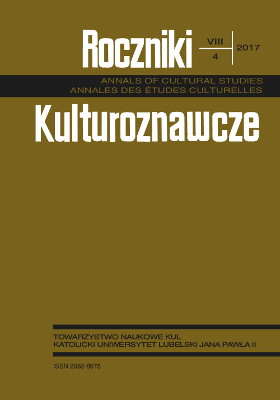Sztuka w służbie „geografii zbawienia” — uwagi o projekcie i początkach budowy kalwarii plenerowej w Szarogrodzie na Podolu
Art in the Service of “the Geography of Salvation”: Remarks on the Project and Starting of Construction of the Pleneral Calvary at Sharhorod in Podolia
Author(s): Cyprian Janusz MorycSubject(s): Christian Theology and Religion, Fine Arts / Performing Arts, Architecture, History of Church(es), Visual Arts, Theology and Religion
Published by: Towarzystwo Naukowe KUL & Katolicki Uniwersytet Lubelski Jana Pawła II
Keywords: Sharhorod; Calvary; iconography; a garden of prayer; sacred art
Summary/Abstract: The article focuses on the artistic concepts of the outdoor pilgrimage centre in Sharhorod in the broad context of the Franciscan passion tradition and the history as well as the culture of Sharhorod, which is undoubtedly a unique place. The aim of the article is to present the iconographic program of the Calvary in Sharhorod, including its integral link with the old concepts of passion centres and historical and cultural realities of the picturesque town, which never ceases to fascinate travellers and artists. A multifaceted analysis used in the study is the result of a number of methods relevant for interdisciplinary research. In addition to the interview and participant observation, which was possible due to author’s involvement in the projects for many years, the author used the analytical and comparative methods as well as the analytical and descriptive methods, the tools of which allowed the researcher to capture the essential components of traditional and contemporary Calvary centres. The article presents the rich history of Sharhorod with emphasis on recent events, especially the circumstances of the Calvary creation and the first manifestations of organized worship of the Passion. The author analysed both an overall picture of the Cavalry—a large garden of prayer and pilgrimage routes—as well as architecture and artistic vision of the internal design of individual chapels. The results of the analysis can be used in pastoral and educational work. They can also become the basis for the iconographic interpretation of the pilgrimage centre, which through an impact on the region participates in the reconstruction and creation of the Christian culture after the severe devastation caused by Communism.
Journal: Roczniki Kulturoznawcze
- Issue Year: 8/2017
- Issue No: 4
- Page Range: 145-176
- Page Count: 32
- Language: Polish

